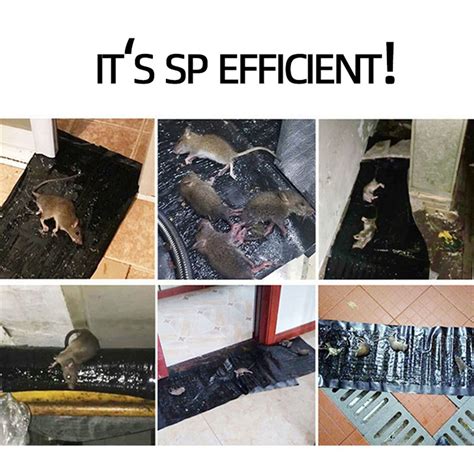Pest Control: Sticky Mouse Traps - Safe and Effective Removal Solutions
Sticky mouse traps, while effective at catching mice, present a challenge when it comes to removal. The trapped mouse's struggle often results in a gruesome and distressing scene, and the sticky substance itself can be difficult to manage. This article explores safe and humane solutions for removing mice from sticky traps, focusing on minimizing distress for both the animal and the person handling the trap.
What are the dangers of sticky traps?
Sticky traps, also known as glue traps, pose several dangers. For the mouse, they cause prolonged suffering and potential injury. The mouse may struggle for hours, becoming injured or dehydrated. For the person removing the trap, there's the risk of direct contact with the adhesive, which can be difficult to remove from skin and clothing. Furthermore, the sight of a trapped animal can be upsetting for many people.
How to humanely remove a mouse from a sticky trap?
The most humane method involves minimizing the mouse's suffering and ensuring its safe release. Here's a step-by-step guide:
1. Gather your supplies: You'll need:
- Vegetable oil or cooking spray: This will loosen the adhesive.
- Gloves: Protect your hands from the sticky residue.
- Tweezers or tongs: To gently manipulate the trap.
- A small container: To transport the mouse once freed. A cardboard box with air holes works well.
- A towel or cloth: To clean up any mess.
2. Prepare the area: Work in a well-ventilated area. Cover the surface you're working on with newspaper or a disposable surface protector to make cleanup easier.
3. Loosen the adhesive: Carefully apply the vegetable oil or cooking spray to the edges of the sticky trap where the mouse is stuck. Work slowly and gently to avoid further stressing the animal. The oil will help to break down the adhesive, making it easier to free the mouse.
4. Carefully remove the mouse: Use the tweezers or tongs to gently lift the mouse from the trap. Avoid pulling abruptly, as this could cause injury. Work slowly and methodically, releasing small sections at a time. If the mouse is severely stuck, apply more oil and patiently work around its body.
5. Release the mouse: Once free, place the mouse into the prepared container. Release it outdoors, ideally far from your home, in an area with vegetation and a water source.
6. Clean up: Dispose of the sticky trap according to local regulations. Clean the area thoroughly with soap and water, paying attention to any remaining adhesive. Dispose of soiled materials carefully.
What if the mouse is injured?
If the mouse appears injured (bleeding, broken limbs, etc.), contact your local animal rescue or wildlife rehabilitation center. They have the expertise to provide appropriate care and treatment.
How can I prevent mice from entering my home?
Prevention is key to controlling rodent infestations. Here are some proactive steps:
Preventing Mice Infestations:
- Seal entry points: Inspect your home for any cracks or holes, and seal them with caulk or steel wool. Pay particular attention to areas where pipes and wires enter the home.
- Store food properly: Keep food in airtight containers to prevent attracting rodents. Clean up spills promptly.
- Maintain cleanliness: Regularly clean your home, removing crumbs and debris. Empty trash cans frequently.
- Remove clutter: Clutter provides hiding places for mice. Keep your home tidy and organized.
- Consider natural repellents: Some people find success using natural repellents like peppermint oil or mothballs, although their effectiveness can vary.
Are there alternatives to sticky traps?
Yes, there are more humane and effective alternatives to sticky traps, including:
- Snap traps: While not humane, these traps offer a quicker and potentially less stressful death.
- Live traps: These allow you to capture the mouse alive and release it far from your home.
- Electronic traps: These traps use electricity to kill the mouse, often considered a more humane alternative to sticky traps.
Choosing the right method depends on your personal preferences and ethical considerations. Always prioritize humane methods and prioritize prevention to reduce the need for pest control measures altogether.
How do I dispose of sticky traps safely?
Sticky traps should be disposed of responsibly to prevent further harm to wildlife. After removing the mouse (if present) and cleaning away excess adhesive, wrap the trap tightly in plastic and seal it securely before placing it in your regular trash. Always follow local guidelines for hazardous waste disposal.
By following these guidelines, you can effectively and humanely remove mice from sticky traps while ensuring your safety and minimizing environmental impact. Remember, prevention is always the best approach to pest control.

